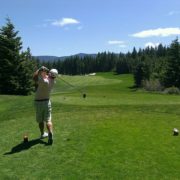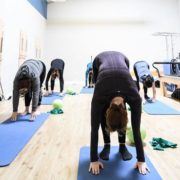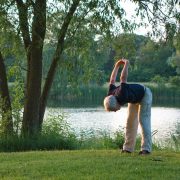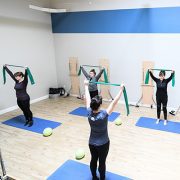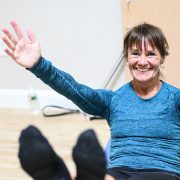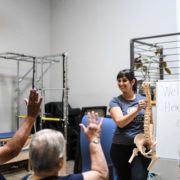Common Golf Injuries and How to Avoid Them
Most golfers I know won’t let anything stop them from being out on the course – especially here in New England where the golf season is not very long.
But let’s face it, when something hurts, playing 9-holes is just not as fun.
Jack Nicklaus had it right when he said, “Professional golfers condition to play golf; amateur golfers play golf to condition.” That explains why 62 percent of amateurs will sustain a significant golf injury, typically because they’re out of shape, have poor swing mechanics, or don’t adequately warm up.
Here are three common golf injuries and things you can do to avoid them.
Elbow Tendonitis
Tendonitis is characterized as the painful inflammation of a tendon. It’s caused by repetitive movements that overload the tendon, eventually causing it to feel strained and overworked. When it occurs on the inside of your elbow, which is something that happens a lot with golfers, it’s called “golfer’s elbow.” The treatment is ice and rest initially (which means you don’t get to play golf for a while) followed by progressive and proper loading of the tendon to get it back to a healthy state. This whole process, if done properly, takes time… and it can certainly ruin your golf season if it’s not caught early.
What causes elbow tendonitis? We know that technically, it’s inflammation of tendons in your elbow. But what leads to that in the first place? Often weakness in your mid-back and shoulders along with mobility restrictions in your wrists. Your elbow is significantly influenced by what happens above and below it. If your mid-back and shoulder area are weak, the rest of your arm won’t feel supported and your elbow can get overworked. If your wrist is tight and immobile, your elbow will be forced to move more than it should, especially through a golf swing. This will cause extra stress on your tendons and eventually result in tendonitis. The best way to prevent this from happening is to make sure you’ve got adequate mobility in your wrists, and good strength in your mid back and shoulders.
Back Pain
One of the most common ways to hurt your back is with repetitive flexion (bending) and rotation (twisting). Well, what does a round of golf consist of over and over? Repetitive bending and twisting! Every time you swing that golf club, you’re putting your spine through one of its most stressful positions. And if it’s not prepared — it’s going to get injured.
One of the best ways to prepare your spine for a long and healthy golf season is to avoid a lot of sitting and keep it mobile. Sitting for prolonged periods makes your back more susceptible to injury in general, but especially if you’re going to be doing a lot of bending and twisting. Interrupting your sitting frequently during the day is a very easy way to minimize its harmful effects.
If you lack adequate mobility in your spine, it will feel strained every time you try and swing your club. When you overstress a joint that is stiff, the muscles around it tend to tighten up and spasm in response. It’s important that you take time to optimize and maintain your best spinal mobility for golf season. This will significantly help to decrease the stress that occurs in your spine when you swing in one direction repetitively, and ultimately help you prevent a back injury.
Knee pain
Between walking 18 holes, and the repetitive twisting that happens at your knee when you swing a golf club, there’s the potential for lots of stress (and injury) through your knee joints. If you lack adequate mobility or stability in and around your knees, you’re going to have problems. Much like the elbow, the most common source of knee pain I see in my golfers comes from the joints above and below, and not from the knee itself. To keep your knees mobile and healthy and prevent them from getting overstressed during golf season, it’s important that you take measures to optimize the strength in your core and hips, as well as stability in your feel and ankles.
The power in your golf swing should come from your hips and core, not from your knees (or back). If they aren’t very strong, your knees will want to try and help, and they are not designed for this. Your knees need to be loose and free during a golf swing. If not, the muscles and ligaments around your knee joint will take on unwanted stress.
Another cause of unwanted stress to your knee joint is lack of support from your feet and ankles.
Your knees need a stable foundation if they want to bend and twist without stress. If stability below is lacking, your knees will tighten up in an effort to compensate. Moral of the story: make sure you’ve got mobile knees, a strong core and hips, plus stable feet and ankles, so that knee pain doesn’t derail your golf season.
Hopefully these tips help you understand why golf injuries happen and most importantly, how to prevent them. If you’re feeling stuck and looking for individualized expert help – request a FREE Discovery Session. We look forward to speaking with you!
Dr. Carrie Jose, Physical Therapist and Pilates expert, owns CJ Physical Therapy & Pilates in Portsmouth, NH. To get a free copy of her guide to taking care of back pain – click here.

